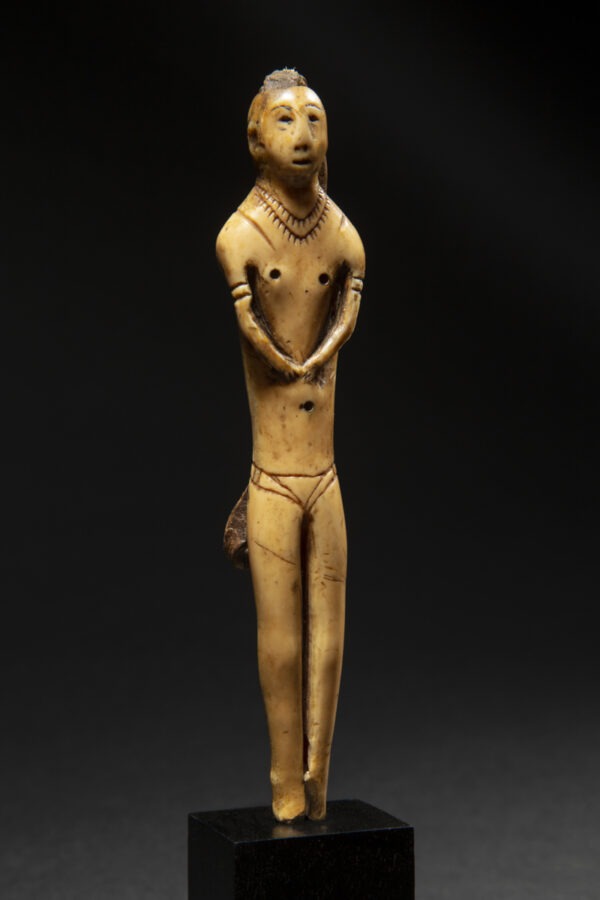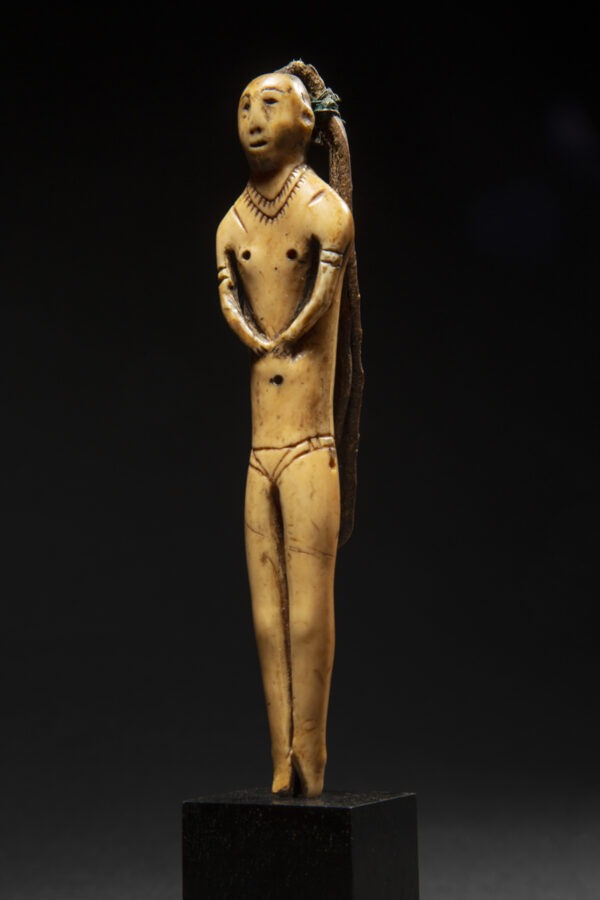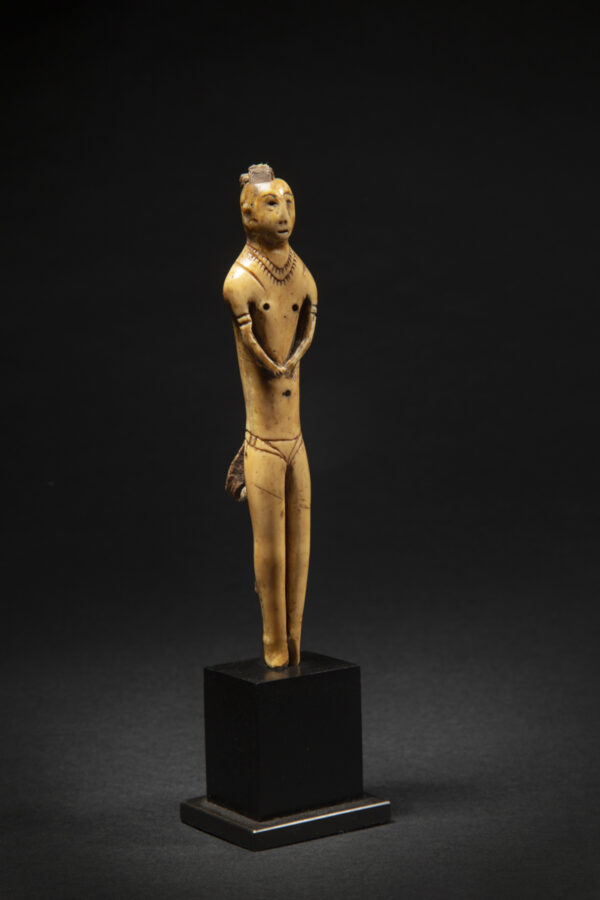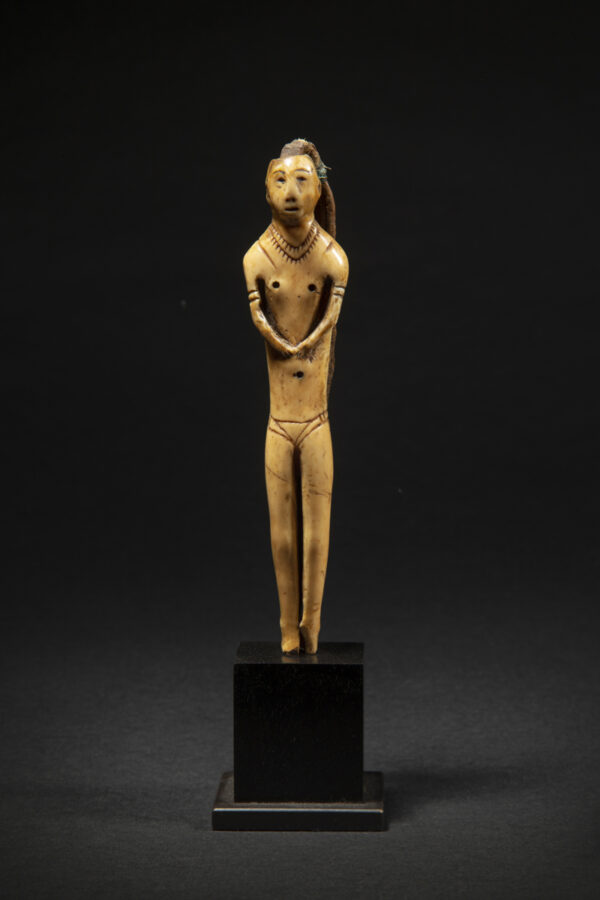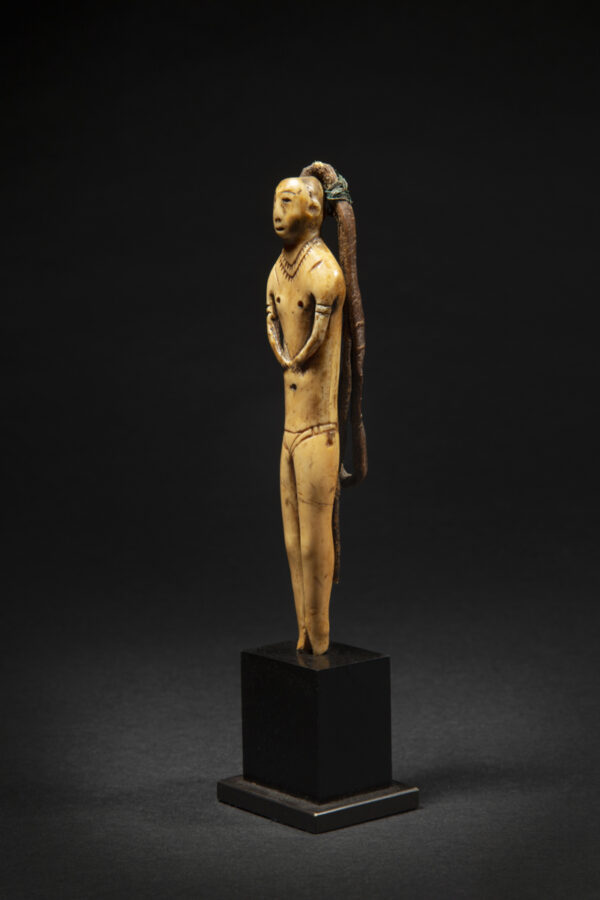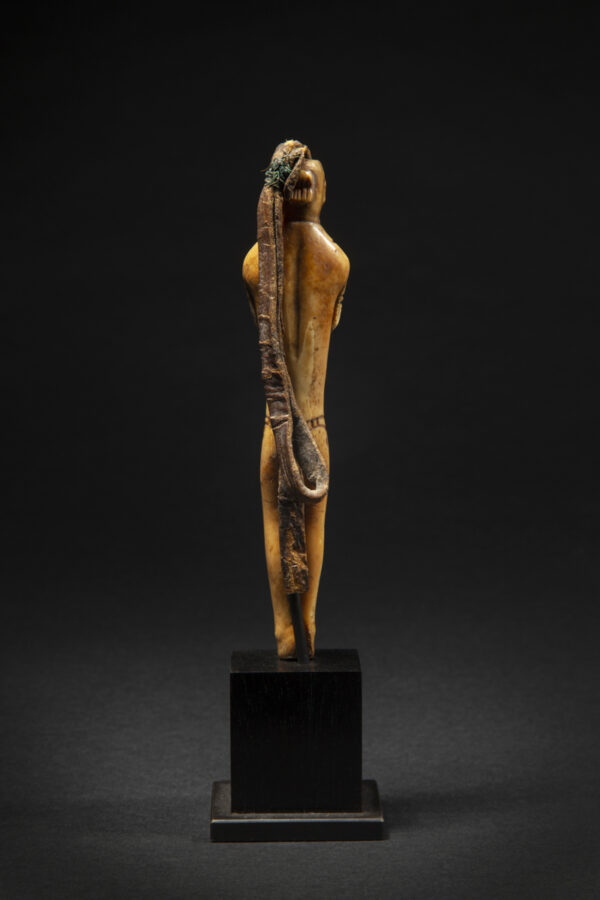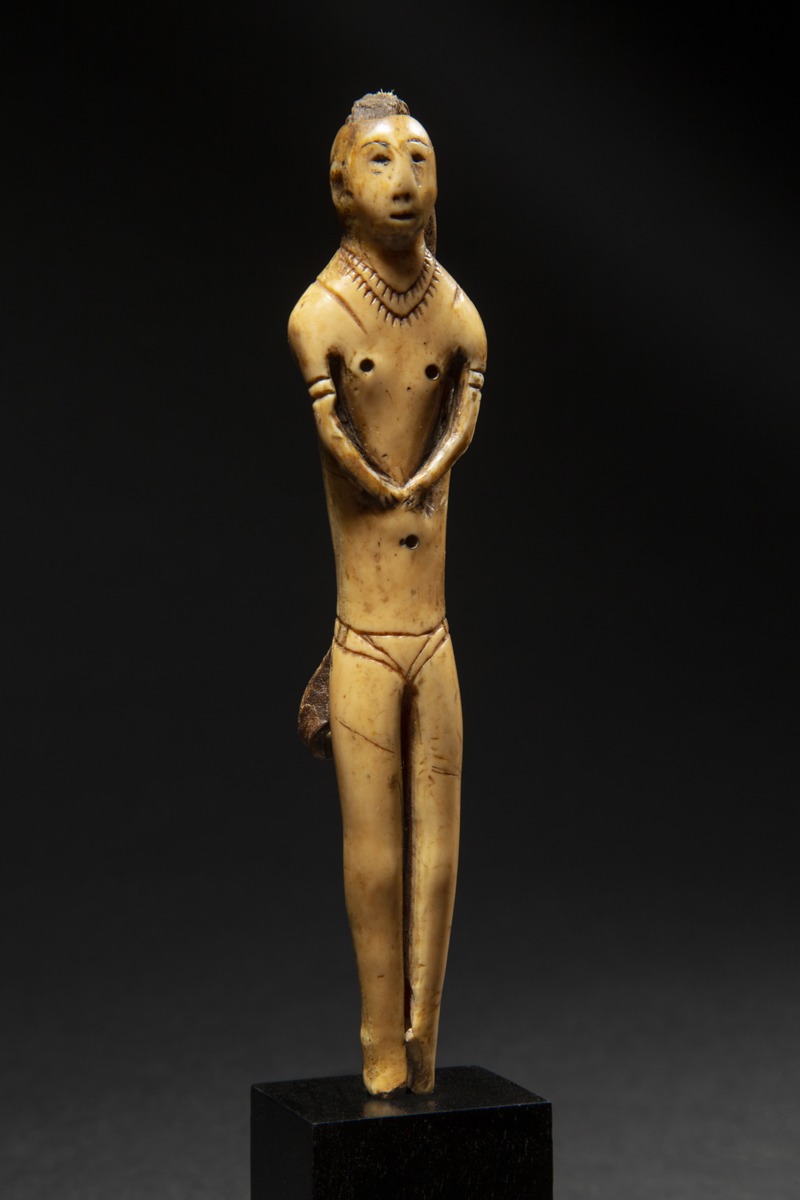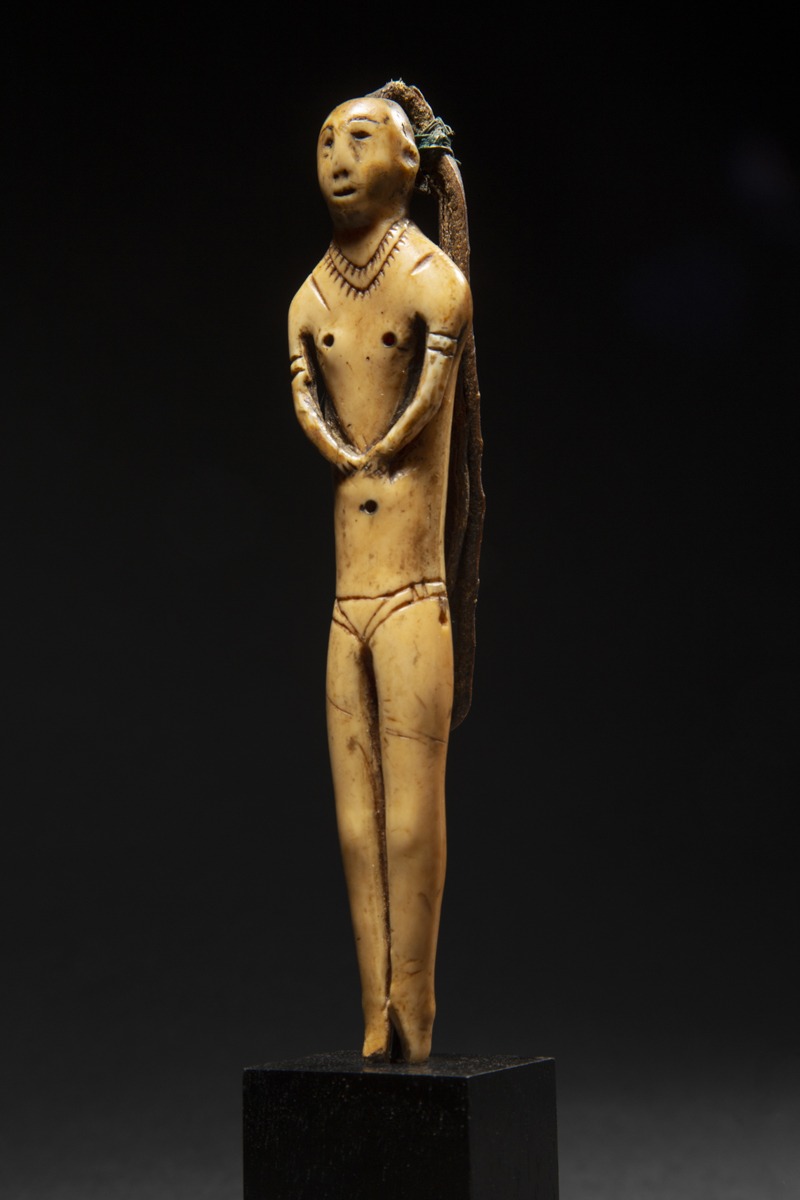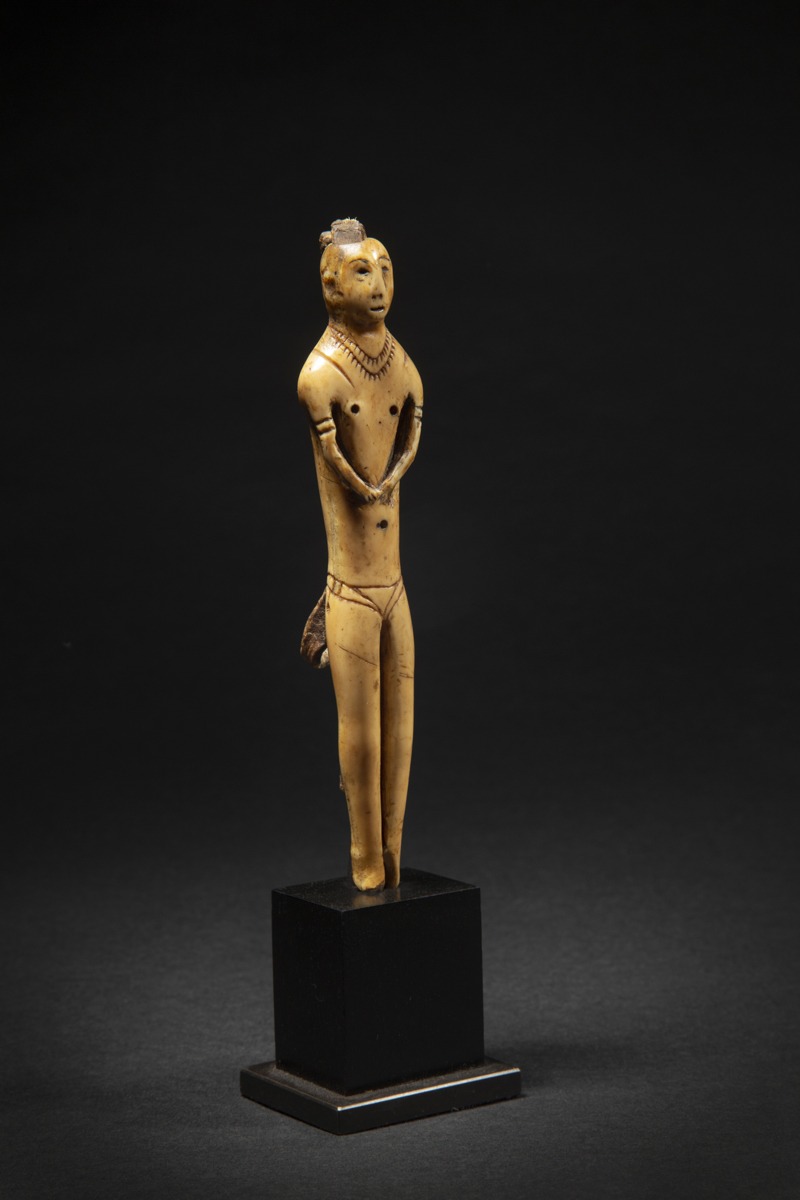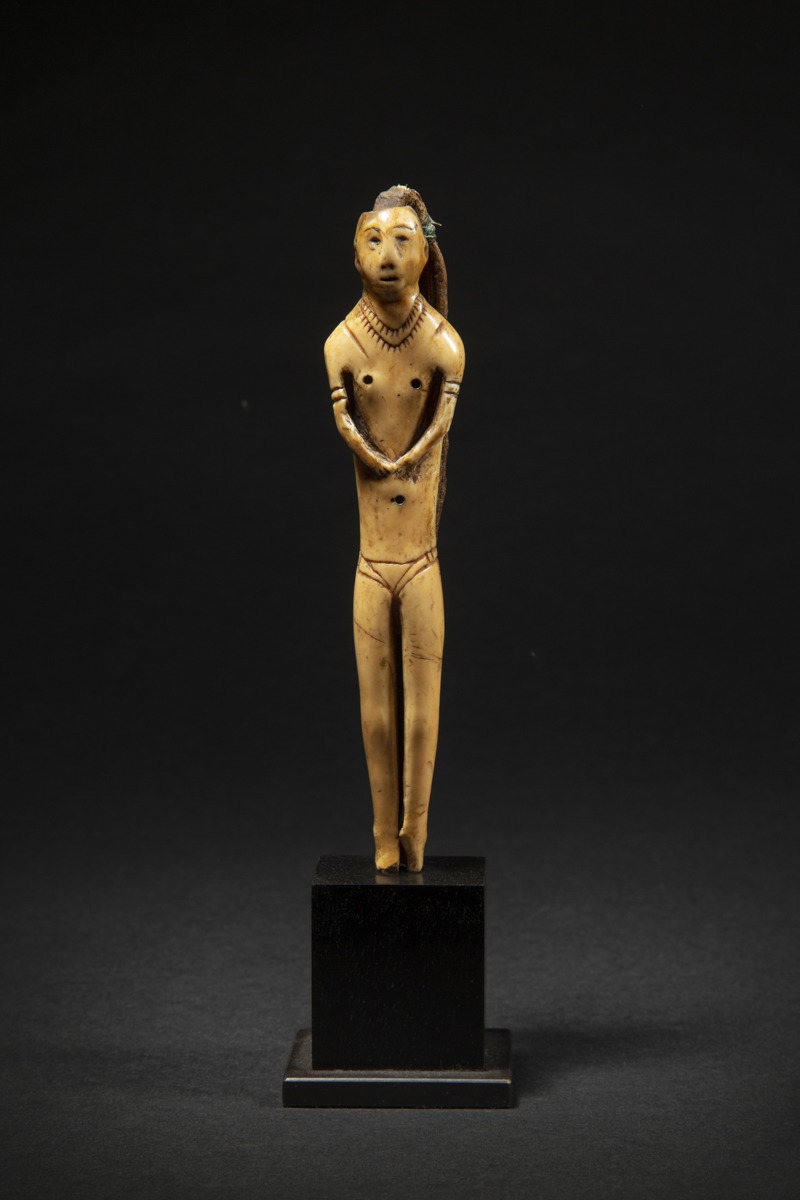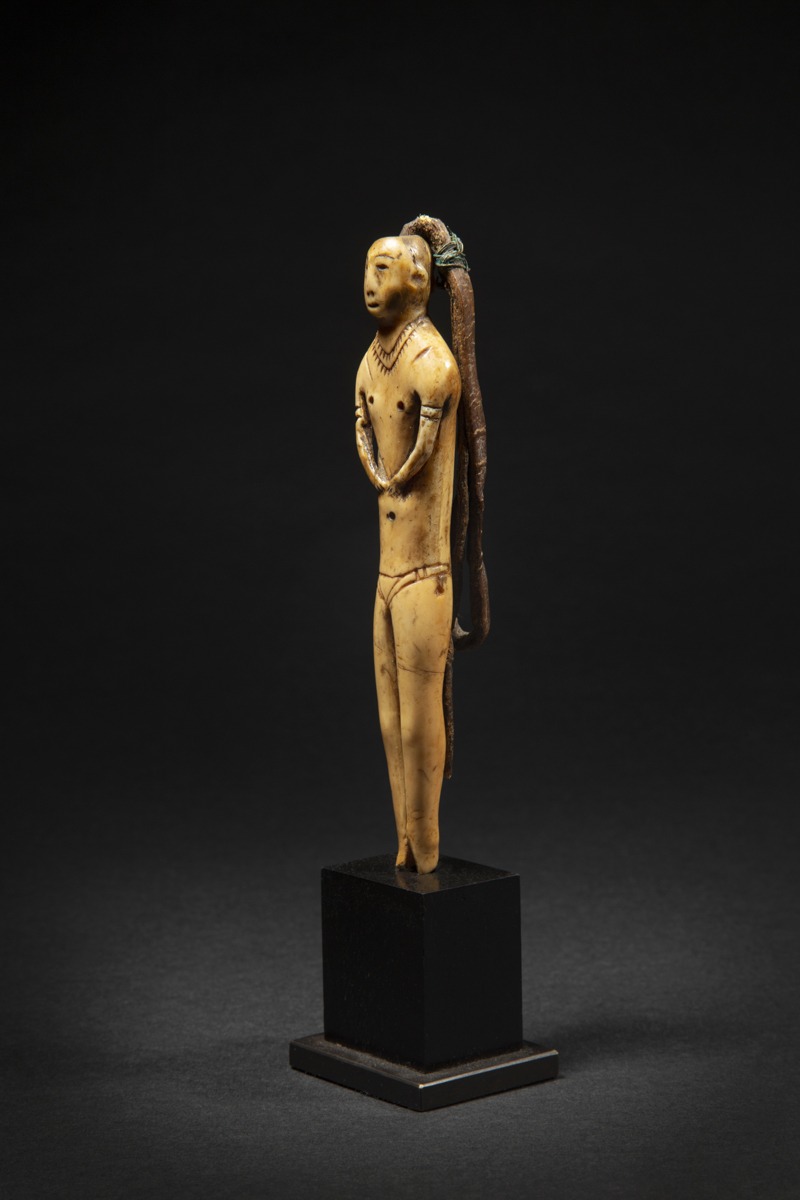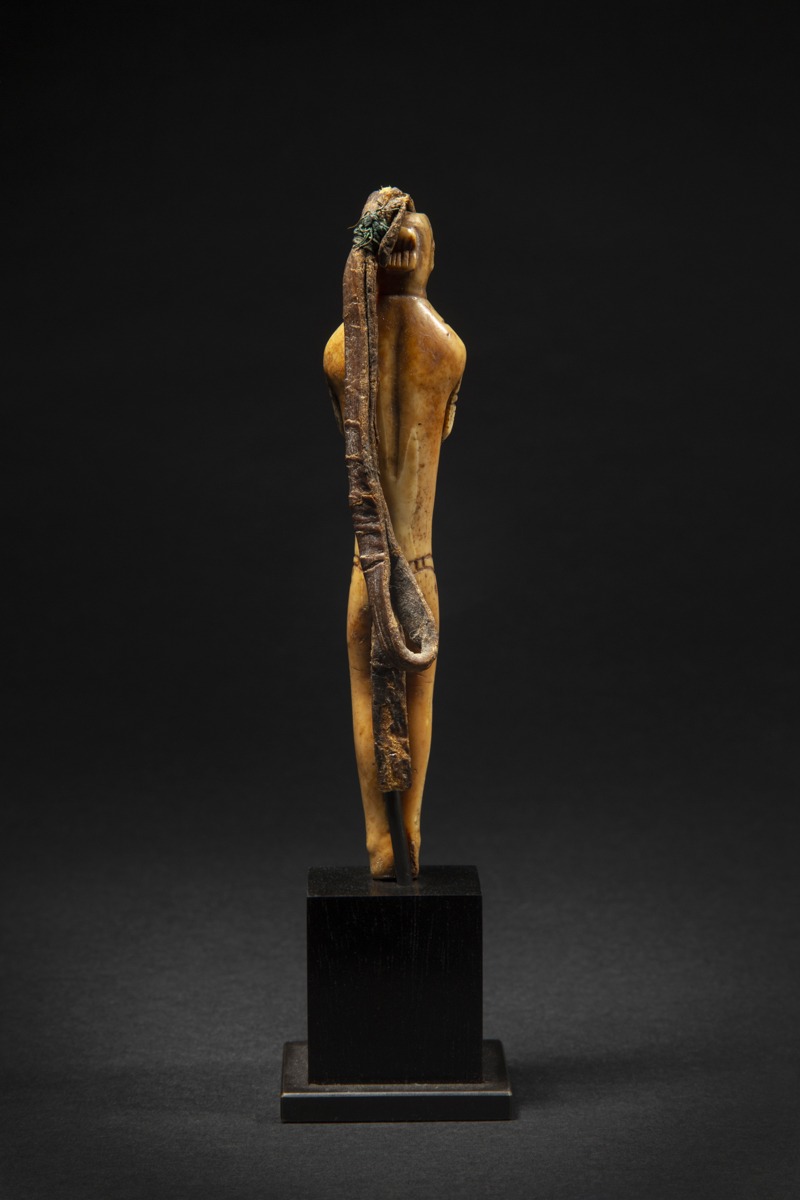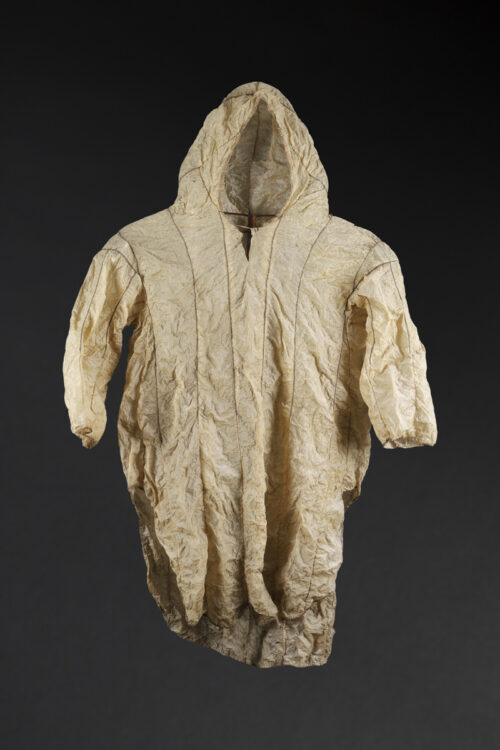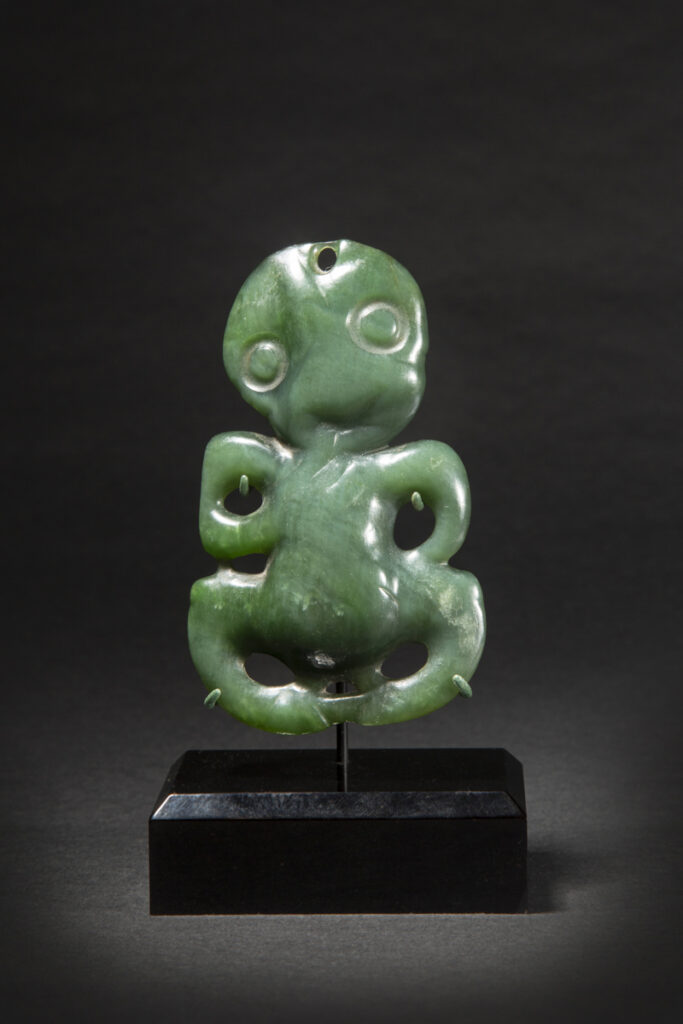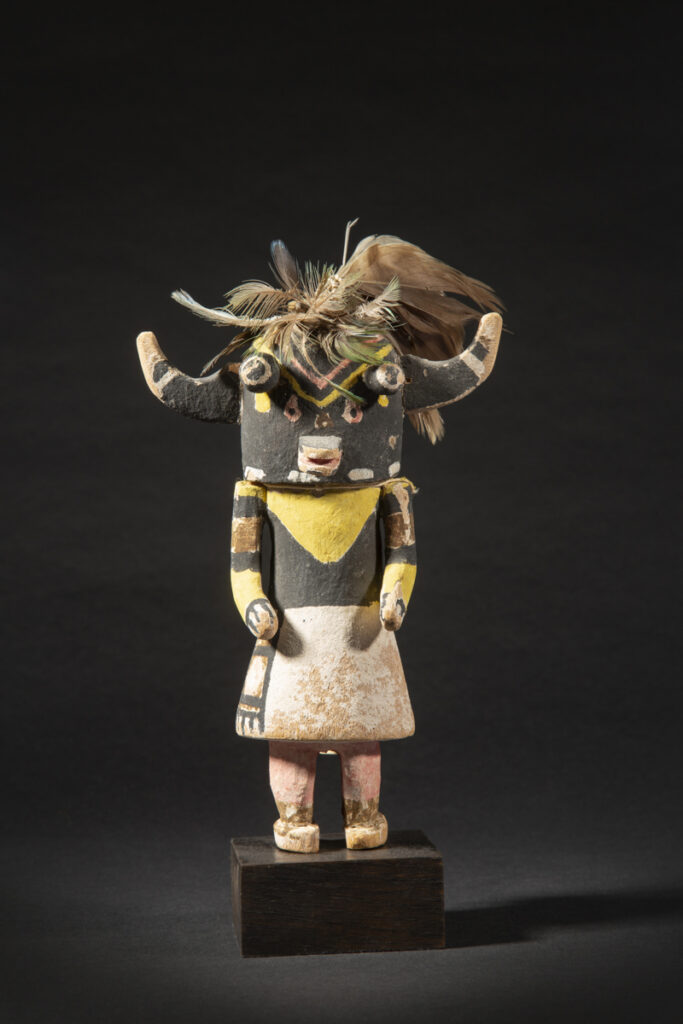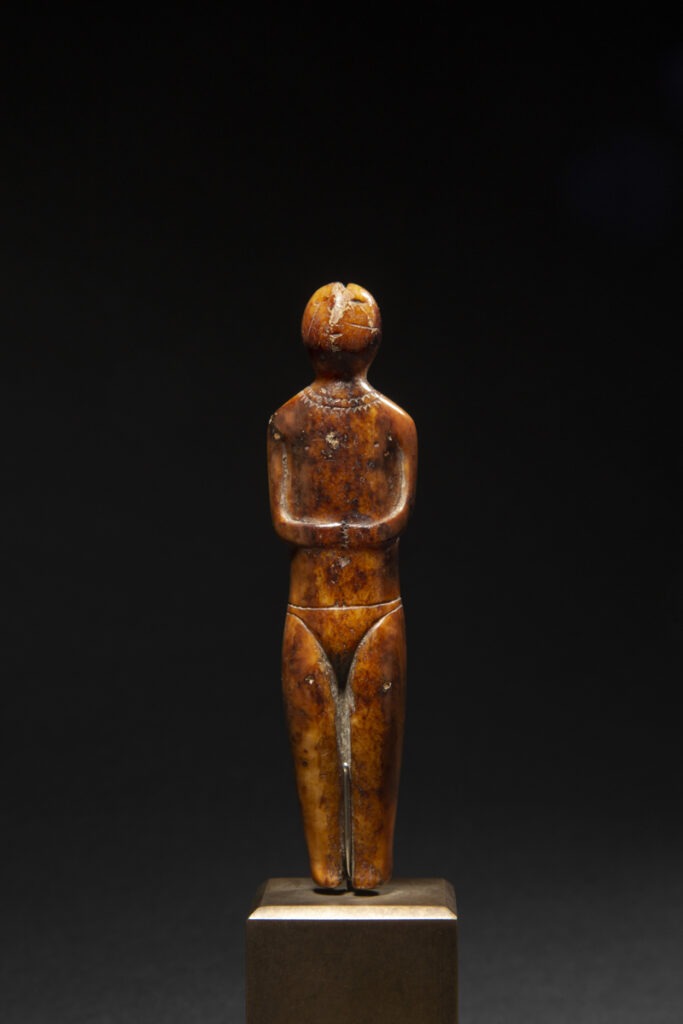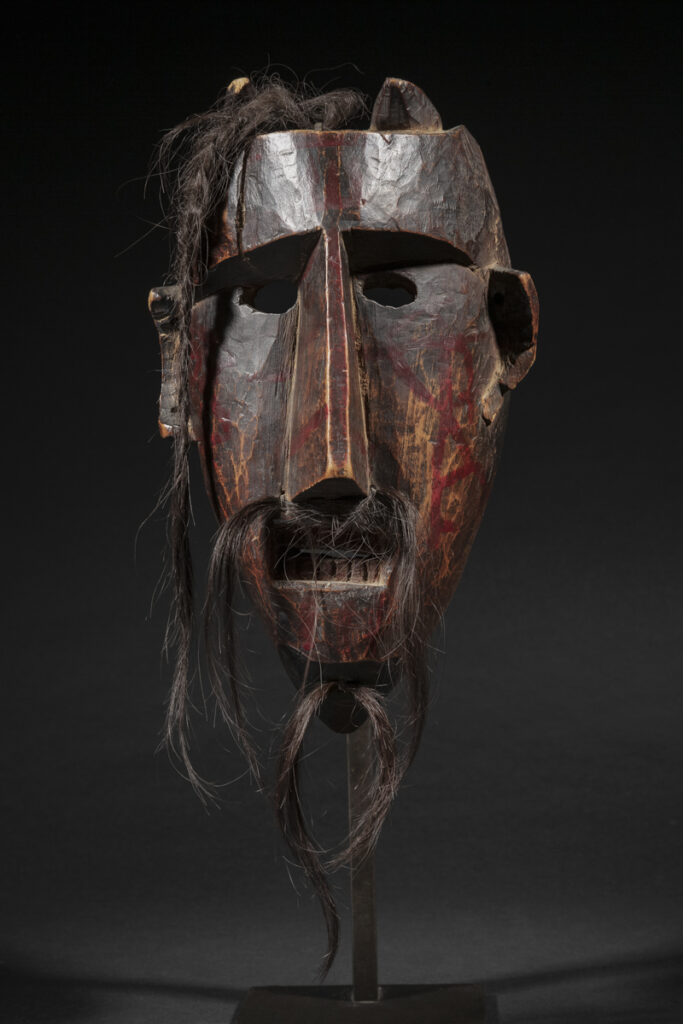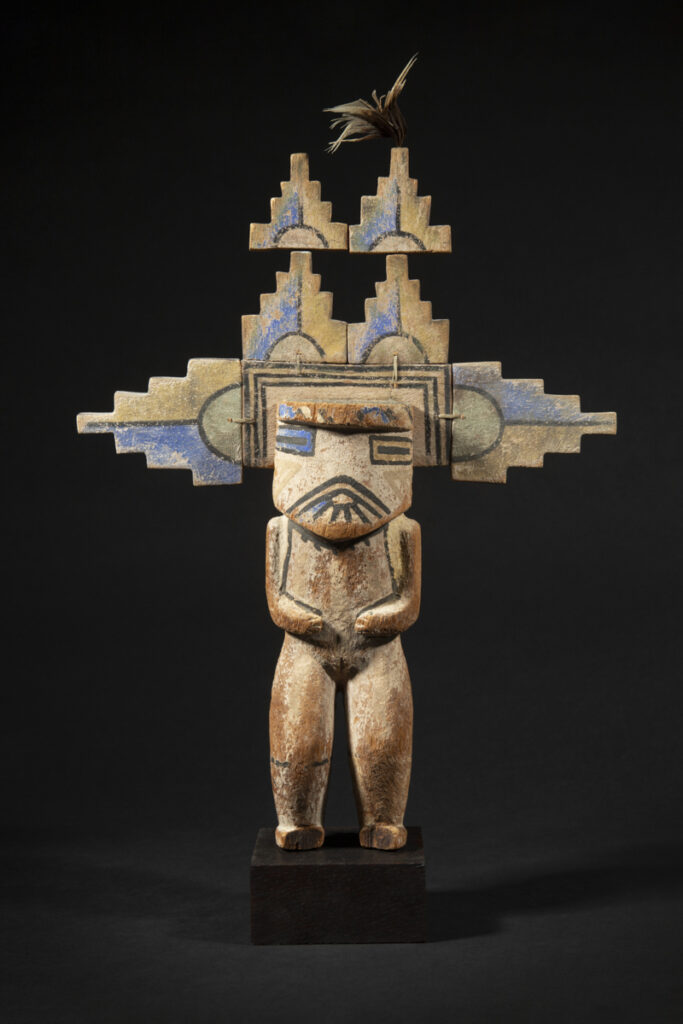North America | Alaska
Thule Figure
Alaska
Needle case depicting a large human figure
Thule Culture – Ancient Eskimo
12th – 18th century
Marine ivory and leather
Height: 13 cm – 5 ¼ in.
Provenance
Collection Jeffrey R. Myers, New York
Collection Amy & Elliot Lawrence, New York, acquired from the above
Collection Galerie Flak, Paris
Collection Guy Porré & Nathalie Chaboche, acquired from the above
Publication
Art of the Ancestors: Antique North American Indian Art, Aspen Museum of Art, George Everett Shaw, 2004, p. 85
Thule Needle case 13 cm / Galerie Flak
Price : on request
According to Fitzhugh & Kaplan (Inua: Spirit World of the Bering Sea Eskimo, 1982 : 156), these carved figurines were carved for several purposes: to stand in for people absent from the village during festivals, to avert infertility, or else to focus the attention of animal inua (spirit) during the Doll Festival, which was held to bless hunting and fishing expeditions in the coming year.
Sewing equipment is a vital component for the subsistence of those residing in the Arctic region.
Of greater significance than a knife, of higher desire than sustenance, and of more critical importance than medication, the sewing kit emerged as the paramount survival tool for indigenous populations in the Arctic, where the most formidable menace to existence originated from the environment itself.
Sewing kits included copper, ivory or bone needles, sinew thread, an aul, a thimble, leather for storing needles, a bone or ivory needle-case, and a bone toggle for securing the case to an article of clothing.
Anyone traveling, man or woman, would pack a sewing kit. For instance, even the smallest tear in a kayak-skin would require immediate attention, necessitating the hunter to promptly sew and patch it on the spot.
Allowing for the creation of tailored clothing suitable for extreme conditions, the needle and the needle case were, according to curator Amber Lincoln (Sainsbury Centre, Norwich, UK) “the most important technology in the Arctic, full stop”,
This value was reflected in the effort makers put into their design, with intricately carved tubular cases created to provide adequate storage for delicate bone needles.
As noted by Steven Hooper, needle cases in human form are rare (Robert and Lisa Sainsbury Collection, Vol. 2: Pacific, African and Native North American Art, edited by Steven Hooper (Yale University Press, 1997) p. 248
Sewing equipment is a vital component for the subsistence of those residing in the Arctic region.
Of greater significance than a knife, of higher desire than sustenance, and of more critical importance than medication, the sewing kit emerged as the paramount survival tool for indigenous populations in the Arctic, where the most formidable menace to existence originated from the environment itself.
Sewing kits included copper, ivory or bone needles, sinew thread, an aul, a thimble, leather for storing needles, a bone or ivory needle-case, and a bone toggle for securing the case to an article of clothing.
Anyone traveling, man or woman, would pack a sewing kit. For instance, even the smallest tear in a kayak-skin would require immediate attention, necessitating the hunter to promptly sew and patch it on the spot.
Allowing for the creation of tailored clothing suitable for extreme conditions, the needle and the needle case were, according to curator Amber Lincoln (Sainsbury Centre, Norwich, UK) “the most important technology in the Arctic, full stop”,
This value was reflected in the effort makers put into their design, with intricately carved tubular cases created to provide adequate storage for delicate bone needles.
As noted by Steven Hooper, needle cases in human form are rare (Robert and Lisa Sainsbury Collection, Vol. 2: Pacific, African and Native North American Art, edited by Steven Hooper (Yale University Press, 1997) p. 248
Explore the entire collection
